#india space research organisation
Text
NASA and India to cooperate on human space exploration
Indian Prime Minister Narendra Modi, left, and President Joe Biden hold a press briefing on U.S.-India relations. The briefing included remarks on India signing the Artemis Accords. Credit: The White House
NASA and the Indian Space Research Organisation are set to cooperate on a joint mission to the International Space Station next year, according to the White House.
Continue reading Untitled

View On WordPress
#Artemis Accords#Artemis program#Human Spaceflight#India Space Research Organisation#International Space Station#Joe Biden#Lead Stories#Narendra Modi#NASA
0 notes
Text
இந்திய விண்வெளி ஆராய்ச்சி நிறுவனத்தின் பின் வரும் பணிகள் நிரப்புவதற்கான அறிவிப்பு வெளியாகியுள்ளன
இந்திய விண்வெளி ஆராய்ச்சி நிறுவனத்தின் பின் வரும் பணிகள் நிரப்புவதற்கான அறிவிப்பு வெளியாகியுள்ளன
#govtjobs #upsc #ssc #currentaffairs #gk #ssccgl #ias #jobs #governmentjobs
இந்திய விண்வெளி ஆராய்ச்சி நிறுவனத்தின் பின் வரும் Assistant (Rajbhasha) பணிகள் நிரப்புவதற்கான அறிவிப்பு வெளியாகியுள்ளன. மத்திய அரசு இந்த அதிகாரப்பூர்வ அறிவிப்பினை வெளியிட்டுள்ளது. இந்திய விண்வெளி ஆராய்ச்சி நிறுவனத்தின் பணிக்கு விண்ணப்பிக்க ஆர்வமுள்ளவர்கள் 08/12/2022 முதல் 28/12/2022க்குல் என்ற இனையத்தில் மூலமாக ஆன்லைன் மூலமாக விண்ணப்பிக்கவும். இப்பணிக்கு விண்ணப்பிக்கும் நபர்கள் விண்ணப்பிக்கும்…

View On WordPress
#india space research organisation#india space research organization#indian research and space organisation#indian space agency#indian space research organisation#indian space research organisation (isro)#indian space research organisation explained#indian space research organisation news#indian space research organisation news today#indian space research organisation upsc#indian space research organization#indian space research organization (isro)#ISRO Recruitment 2022 07 Assistant (Rajbhasha) Posts#space research
0 notes
Text
ISRO using that frugal indian stereotype to land a rocket on the moon with less budget than hollywood movies
#groundbreaking#isro#isromoonmission#chandrayaan3#isromissions#india#south pole mission#indian space research organisation#lets fucking go
85 notes
·
View notes
Text
India has landed on the Moon!!! The landing is part of the Indian Space Research Organisation (ISRO)'s historic Chandrayaan-3 mission.
"'We have achieved soft landing on the moon,'" said ISRO Chairman Shri Somanath. 'Yes, on the moon!'"
"[Indian Prime Minister Narenda Modi] then addressed the ISRO team, speaking in Hindi but adding in English, 'India is now on the moon!'
'The success belongs to all of humanity,' he said. 'And it will help moon missions by other countries in the future. I'm confident that all countries in the world ... can all aspire for the moon and beyond. ... The sky is not the limit!'"
The remote operated lander named Vikram touched down in the south pole region at 6:02pm IST on August 23, 2023. Vikram carried a small but mighty companion, the lunar rover Pragyan (Sanskrit, "wisdom").
Vikram is named after Vikram Sarabhai, PhD, physicist, astronomer, and a major figure in the development of India's space and nuclear programs. Sarabhai served as the first chairman of the ISRO, as well as the driving force behind the organization's creation. Recognizing the need for more coordinated space research in India, Sarabhai urged the Indian government to create INCOSPAR - the committee that eventually formed the ISRO in 1969.
#india moon mission#indian space research organisation#chandrayaan3#ISRO#chandrayaan-3#vikram lander#India moon landing#pragyan rover#Vikram Sarabhai
14 notes
·
View notes
Text
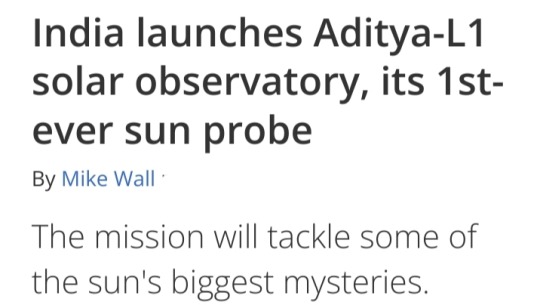
2 September 2022
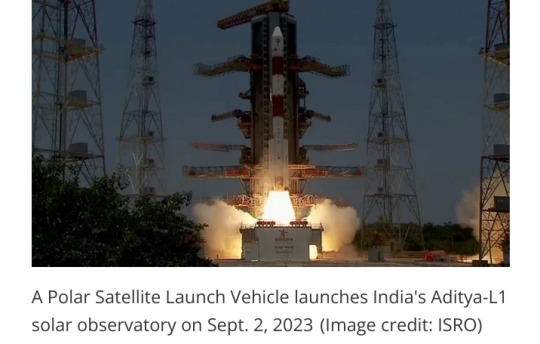
Fresh off its success at the moon, India is now headed for the sun.
The nation launched its first-ever solar observatory today (Sept. 2), sending the Aditya-L1 probe skyward atop a Polar Satellite Launch Vehicle (PSLV) from Satish Dhawan Space Centre at 2:20 a.m. EDT (0620 GMT; 11:50 a.m. local India time).
The PSLV deployed Aditya-L1 into low Earth orbit (LEO) as planned about 63 minutes after liftoff, sparking applause and high fives in mission control.
"Congratulations, India, and congratulations, ISRO [the Indian Space Research Organisation]," Jitendra Singh, India's Minister of State for Science and Technology, said shortly after deployment on ISRO's launch webcast.
"While the whole world watched this with bated breath, it is indeed a sunshine moment for India," Singh added.
The successful launch followed on the heels of another big milestone for India: On August 23, its Chandrayaan-3 mission became the first to land softly near the moon's south pole.
Chandrayaan-3's lander-rover duo are expected to conk out in a week or so, when the harsh lunar night falls at their touchdown site. But Aditya-L1's long journey has just begun.
A long road to a good sun-viewing spot
Aditya-L1 won't stay in LEO forever:
After a series of checkouts, it will use its onboard propulsion system to head toward Earth-sun Lagrange Point 1 (L1), a gravitationally stable spot about 1 million miles (1.5 million kilometers) from our planet in the direction of the sun.
That destination explains the latter part of the mission's name. And the first part is simple enough: "Aditya" translates to "sun" in Sanskrit.
The 3,260-pound (1,480 kilograms) observatory will arrive at L1 about four months from now, if all goes according to plan.
But the long trek will be worth it, according to the ISRO.
"A satellite placed in the halo orbit around the L1 point has the major advantage of continuously viewing the sun without any occultation/eclipses," ISRO officials wrote in an Aditya-L1 mission description.
"This will provide a greater advantage of observing the solar activities and its effect on space weather in real time."
Indeed, another sun-studying spacecraft is already at L1 — the Solar and Heliospheric Observatory (SOHO), a joint NASA-European Space Agency mission that launched in December 1995.
(Several other spacecraft, including NASA's James Webb Space Telescope, are at Earth-sun Lagrange Point 2, which is a million miles from Earth, in the direction away from the sun.)

Solar flares, the coronal heating mystery and more
Once it's settled in at L1, the solar probe will use four three science instruments to study the particles and magnetic fields in its immediate surroundings and four others to scrutinize the sun's surface (known as the photosphere) and its atmosphere.
This work will help scientists better understand solar activity, including the dynamics of solar flares and coronal mass ejections (CMEs), ISRO officials say.
Flares are powerful flashes of high-energy radiation, and CMEs are huge eruptions of solar plasma.
Both types of outburst can affect us here on Earth. Intense CMEs that hit our planet, for example, trigger geomagnetic storms that can disrupt satellite navigation and power grids.
(As a side benefit, such storms also supercharge the gorgeous light shows known as auroras.)
Aditya-L1 will also tackle the "coronal heating problem," one of the biggest mysteries in heliophysics.
The corona — the sun's wispy outer atmosphere — is incredibly hot, reaching temperatures around 2 million degrees Fahrenheit (1.1 million degrees Celsius), according to NASA.
That's about 200 times hotter than the solar surface, which is "only" 10,000 degrees F (5,500 degrees C) or so.
It's still unclear what is responsible for this startling and counterintuitive discrepancy.
(Why would it be hotter away from the sun's core, where the energy-producing nuclear fusion reactions are occurring?)
Aditya-L1 has other science goals as well. For instance, the mission also aims to more fully flesh out the solar wind, the stream of charged particles flowing constantly from the sun, ISRO officials said.
Aditya-L1 will measure the composition of the solar wind and attempt to determine how it is accelerated.
And Aditya-L1 will do all this work on the cheap:
The mission's price tag is about 3.8 billion rupees, or $46 million US at current exchange rates.
That's in the same ballpark as Chandrayaan-3
India's first successful moon-landing mission costs about 6.15 billion rupees, or $74 million US.
For comparison, NASA's most recent big-ticket sun mission, the record-setting Parker Solar Probe, costs roughly $1.5 billion.
This disparity should not be viewed as an indictment of NASA, however; labor costs are much higher in the United States than in India, among other differences between the two nations' economies.
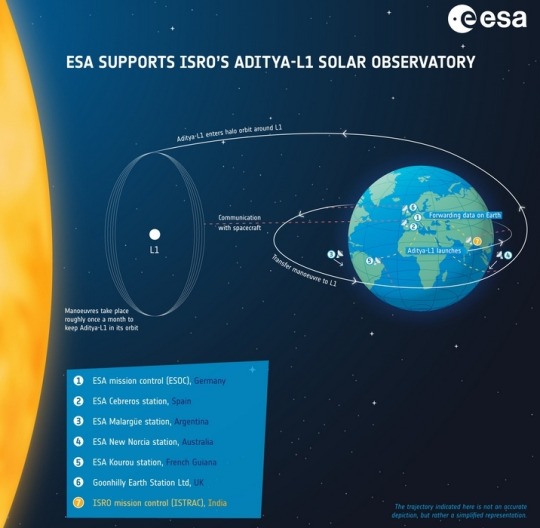
Aditya-L1 is a coronagraphy spacecraft to study the solar atmosphere, designed and developed by the Indian Space Research Organisation (ISRO) and various other Indian research institutes.
#India#Aditya-L1#Polar Satellite Launch Vehicle (PSLV)#Satish Dhawan Space Centre#low Earth orbit (LEO)#sun#Indian Space Research Organisation#Chandrayaan-3#Earth-sun Lagrange Point 1 (L1)#Solar and Heliospheric Observatory (SOHO)#solar flares#coronal mass ejections (CMEs)#coronal heating problem#heliophysics#solar wind#Parker Solar Probe#NASA#solar observatory#solar atmosphere
13 notes
·
View notes
Text
बधाई हो भारत! Congratulations India!
Congratulations India!!
ISRO – Indian Space Research Organisation has achieved the unprecedented soft landing of a probe on the Moon’s South Pole.
Image taken on Internet
This is a huge success for a nation that has been able to successfully send a mission to the Moon on a budget of just under $75 million (around ₹ 615 crore) to build the Chandrayaan-3. As a paragon, Russia’s Luna 25, which…
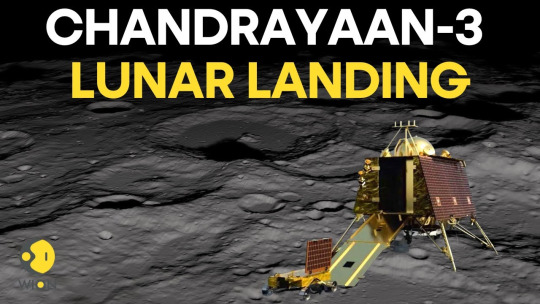
View On WordPress
#Chandrayaan-3#India#Indian Space Research Organisation#ISRO#ISRO - Indian Space Research Organisation#moon#Moon Landing#Moon South Pole#Raffaello Palandri#Space Mission
14 notes
·
View notes
Text
CHANDRAYAAN 3 LANDED ON THE SOUTH SURFACE OF THE MOON
6 notes
·
View notes
Text
Chandrayaan-3: India's Historic Soft Landing on the Moon
Introduction
On August 23, 2023, India made history by successfully landing the Chandrayaan-3 spacecraft on the Moon’s South Pole. This was India’s third lunar mission, and its first soft landing since Chandrayaan-2 in 2019. The successful landing of Chandrayaan-3 is a major achievement for the Indian Space Research Organization (ISRO) and a significant step forward for India’s space…
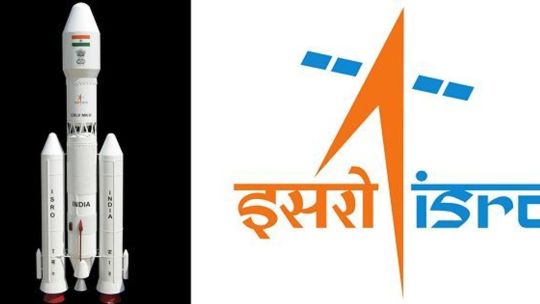
View On WordPress
#Chandrayaan-3#Chandrayaan-3 mission#India&039;s soft landing on Moon#Indian Space Research Organisation (ISRO)#lunar mission#Moon&039;s South Pole#Pragyan rover#scientific instruments#space exploration#Vikram lander
2 notes
·
View notes
Text
A BRIEF INFORMATION ABOUT ISRO
About ISRO
The Indian Space Exploration Association [a] (ISRO;/ˈɪsroʊ/) is the public space organization of India,
settled in Bengaluru. It works under the Branch of Room (DOS) which is straightforwardly
regulated by the State head of India, while the Director of ISRO goes about as the chief of DOS
too. ISRO is India's essential organization for performing errands connected with space-based
applications, space investigation and the improvement of related advances. [6] It is one of six
government space offices on the planet which have full send off abilities, convey cryogenic
motors, send off extraterrestrial missions and work huge armadas of counterfeit satellites. ISRO fabricated
India's first satellite, Aryabhata, which was sent off by the Soviet Association in 1975. [13] In 1980, ISRO
sent off satellite RS-1 installed its own SLV-3, making India the seventh country to be able to do
undertaking orbital send-offs. SLV-3 was trailed by ASLV, which was hence prevailed by
advancement of numerous medium-lift send off vehicles, rocket motors, satellite frameworks and organizations
empowering the organization to send off many homegrown and unfamiliar satellites and different profound space
missions for space investigation.
History of isro ?
After 1945, significant advancements were made in facilitated space research in India ] by two
researchers: Vikram Sarabhai — organizer behind the Actual Exploration
Research facility at Ahmedabad — and Homi Bhabha , who laid out the Goodbye Organization of Major
Research in 1945. Beginning analyses in space sciences incorporated the investigation of grandiose radiation, high
elevation and airborne testing, profound underground trial and error at the Kolar mines — one of the
most profound mining locales on the planet — and investigations of the upper environment. ] These examinations were finished
at research labs, colleges, and autonomous areas. In 1950, the Division of Nuclear
Energy (DAE) was established with Bhabha as its secretary. [17] It gave subsidizing to space research
all through India. [18] During this time, tests forged ahead with parts of meteorology and the Earth's
attractive field, a subject that had been concentrated on in India since the foundation of the Colaba
Observatory in 1823. In 1954, the Aryabhatta Exploration Foundation of Observational Sciences (ARIES)
was laid out in the lower regions of the Himalayas. [17] The Rangpur Observatory was set up in 1957
at Osmania College, Hyderabad. Under the public authority of Indira Gandhi, INCOSPAR was
supplanted by ISRO. Later in 1972, a space commission and Division of Room (DOS) were set
up to manage space innovation improvement in India explicitly and ISRO was brought under
DOS, regulating space research in India and manufacturing the Indian space program into its current
structure. India joined the Soviet Interkosmos program for space collaboration and got its first
satellite Aryabhatta in circle through a Soviet rocket. The appearance of PSLV in 1990s turned into a significant
support for the Indian space program. Except for its most memorable trip in 1994 and two halfway
disappointments later, PSLV had a dash of in excess of 50 fruitful flights. PSLV empowered India to send off all
of its low Earth circle satellites, little payloads to GTO and many unfamiliar satellites. ] Alongside
the PSLV flights, improvement of another rocket, a Geosynchronous Satellite Send off Vehicle (GSLV)
was going on. India attempted to get upper-stage cryogenic motors from Russia's Glavkosmos however
was obstructed by the US from doing as such. Therefore, KVD-1 motors were imported from Russia under
another understanding which had restricted achievement and an undertaking to create native cryogenic
innovation was sent off in 1994, requiring twenty years to arrive at satisfaction.
About Administrator of isro ?
As of now, the occupant Director of ISRO is S Somanath. He is the current
Secretary (Space) and ex-officio director of the Indian Space Exploration
Association and the Space Commission. Somanath had joined the VSSC in 1985
subsequent to finishing his B. Tech in Mechanical Designing from TKM School of
Designing, Kollam, and Experts in Advanced plane design from Indian Foundation of
Science (ISSC), Bengaluru. he is a specialist in a large group of disciplines including send off
vehicle plan and has worked in the accompanying regions: S Somanath, an
famous technical genius, has been delegated as the administrator of ISRO.
Somanath will succeed Kailasavadivoo Sivan who will finish his
residency on Friday.
Right now, S Somanath is the Overseer of Vikram Sarabhai Space Center
(VSSC) in Kerala.
Brought into the world in July 1963, he sought after mechanical designing from TKM
School of Designing, Kerala. Afterward, in 1985 the technical genius
sought after an experts' certification in Aeronautic design from IISc
Bengaluru.
Being a specialist in sending off vehicle plans, Somanath has particular
in send off of vehicle frameworks designing, foundational layout, underlying
elements and methodology. He likewise well versed in component plan and
fireworks.
Rundown of director of isro ?
ISRO Executive
1. Dr. Vikram Sarabhai
2. Prof. M. G. K. Menon
Residency
From 1963 to 1971
From Jan 1972 to Sept 1972
Lengh of Term
9 years
9 months
3. Prof. Satish Dhawan
4. Prof. U. R. Rao
5. . Dr. K. Kasturirangan
6. G. Madhavan Nair
From 1972 to 1984
From 1984 to 1994
From 1994 to 2003
From2003 to 2009
12 years
10 years
9 years
6years
History of organizer isro ?
Sarabhai was conceived August 12, 1919, in Ahmedabad, India, into a group of industrialists. He
at first learned at Gujarat School, yet later moved to College of Cambridge, Britain.
There, got a bachelor's certification in innate sciences in 1940.
Because of WWII, Sarabhai got back to India, and attempted research in
inestimable beams under Indian physicist Sir Chandrasekhara Venkata Raman, at the Indian
Establishment of Science, Bangalore.
arabhai got back to Cambridge in 1945 to seek after a doctorate. In 1947, he composed a proposition
named "Cosmic Beam Examinations in Tropical Latitudes," as per Britannica. Vikram
Sarabhai, universally viewed as the Dad of the Indian Space Program, was an
Indian physicist and industrialist who started space research, and created
atomic power in India
FAQ
1 Might I at any point join ISRO following 35 years?
How might I join ISRO? Your age ought to be under 35 and have a
least 65% score in your BE/B Tech program. Then step through exams
directed by ISRO.
2 Is ISRO equivalent to NASA?
NASA represents Public Aviation and Space Organization and the
full type of ISRO is the Indian Space Exploration Association.
3 Which branch is best for ISRO?
space science is the investigation of the universe by researchers. To turn into a
space researcher in ISRO, you should seek after a designing or science
course. ISRO generally selects experts with a bosses in mechanical,
electrical or PC designing or a PhD in Cosmology, Material science, or
Science.
4 Is there benefits in ISRO?
SRO representatives are likewise responsible for their annuity after retirement. Other
offices you get are, Clinical offices for yourself as well as your loved ones
individuals, a Restricted Lodging office, Voyaging Concessions,
advance on House Development, Gathering Protection, Financed
bottle, HRA and so on.
5 What is the compensation of ISRO Researcher after 10
years?
Normal ISRO Satellite Center Researcher pay in India is ₹ 14.7 Lakhs for
experience between 2 years to 15 years. Researcher pay at ISRO Satellite
Focus India ranges between ₹ 7.2 Lakhs to ₹ 24.0 Lakhs. As per
our evaluations it is 7% not exactly the normal Researcher Pay in Safeguard &
About ISRO
The Indian Space Exploration Association [a] (ISRO;/ˈɪsroʊ/) is the public space organization of India,
settled in Bengaluru. It works under the Branch of Room (DOS) which is straightforwardly
regulated by the State head of India, while the Director of ISRO goes about as the chief of DOS
too. ISRO is India's essential organization for performing errands connected with space-based
applications, space investigation and the improvement of related advances. [6] It is one of six
government space offices on the planet which have full send off abilities, convey cryogenic
motors, send off extraterrestrial missions and work huge armadas of counterfeit satellites. ISRO fabricated
India's first satellite, Aryabhata, which was sent off by the Soviet Association in 1975. [13] In 1980, ISRO
sent off satellite RS-1 installed its own SLV-3, making India the seventh country to be able to do
undertaking orbital send-offs. SLV-3 was trailed by ASLV, which was hence prevailed by
advancement of numerous medium-lift send off vehicles, rocket motors, satellite frameworks and organizations
empowering the organization to send off many homegrown and unfamiliar satellites and different profound space
missions for space investigation.
History of isro ?
After 1945, significant advancements were made in facilitated space research in India ] by two
researchers: Vikram Sarabhai — organizer behind the Actual Exploration
Research facility at Ahmedabad — and Homi Bhabha , who laid out the Goodbye Organization of Major
Research in 1945. Beginning analyses in space sciences incorporated the investigation of grandiose radiation, high
elevation and airborne testing, profound underground trial and error at the Kolar mines — one of the
most profound mining locales on the planet — and investigations of the upper environment. ] These examinations were finished
at research labs, colleges, and autonomous areas. In 1950, the Division of Nuclear
Energy (DAE) was established with Bhabha as its secretary. [17] It gave subsidizing to space research
all through India. [18] During this time, tests forged ahead with parts of meteorology and the Earth's
attractive field, a subject that had been concentrated on in India since the foundation of the Colaba
Observatory in 1823. In 1954, the Aryabhatta Exploration Foundation of Observational Sciences (ARIES)
was laid out in the lower regions of the Himalayas. [17] The Rangpur Observatory was set up in 1957
at Osmania College, Hyderabad. Under the public authority of Indira Gandhi, INCOSPAR was
supplanted by ISRO. Later in 1972, a space commission and Division of Room (DOS) were set
up to manage space innovation improvement in India explicitly and ISRO was brought under
DOS, regulating space research in India and manufacturing the Indian space program into its current
structure. India joined the Soviet Interkosmos program for space collaboration and got its first
satellite Aryabhatta in circle through a Soviet rocket. The appearance of PSLV in 1990s turned into a significant
support for the Indian space program. Except for its most memorable trip in 1994 and two halfway
disappointments later, PSLV had a dash of in excess of 50 fruitful flights. PSLV empowered India to send off all
of its low Earth circle satellites, little payloads to GTO and many unfamiliar satellites. ] Alongside
the PSLV flights, improvement of another rocket, a Geosynchronous Satellite Send off Vehicle (GSLV)
was going on. India attempted to get upper-stage cryogenic motors from Russia's Glavkosmos however
was obstructed by the US from doing as such. Therefore, KVD-1 motors were imported from Russia under
another understanding which had restricted achievement and an undertaking to create native cryogenic
innovation was sent off in 1994, requiring twenty years to arrive at satisfaction.
About Administrator of isro ?
As of now, the occupant Director of ISRO is S Somanath. He is the current
Secretary (Space) and ex-officio director of the Indian Space Exploration
Association and the Space Commission. Somanath had joined the VSSC in 1985
subsequent to finishing his B. Tech in Mechanical Designing from TKM School of
Designing, Kollam, and Experts in Advanced plane design from Indian Foundation of
Science (ISSC), Bengaluru. he is a specialist in a large group of disciplines including send off
vehicle plan and has worked in the accompanying regions: S Somanath, an
famous technical genius, has been delegated as the administrator of ISRO.
Somanath will succeed Kailasavadivoo Sivan who will finish his
residency on Friday.
Right now, S Somanath is the Overseer of Vikram Sarabhai Space Center
(VSSC) in Kerala.
Brought into the world in July 1963, he sought after mechanical designing from TKM
School of Designing, Kerala. Afterward, in 1985 the technical genius
sought after an experts' certification in Aeronautic design from IISc
Bengaluru.
Being a specialist in sending off vehicle plans, Somanath has particular
in send off of vehicle frameworks designing, foundational layout, underlying
elements and methodology. He likewise well versed in component plan and
fireworks.
Rundown of director of isro ?
ISRO Executive
1. Dr. Vikram Sarabhai
2. Prof. M. G. K. Menon
Residency
From 1963 to 1971
From Jan 1972 to Sept 1972
Lengh of Term
9 years
9 months
3. Prof. Satish Dhawan
4. Prof. U. R. Rao
5. . Dr. K. Kasturirangan
6. G. Madhavan Nair
From 1972 to 1984
From 1984 to 1994
From 1994 to 2003
From2003 to 2009
12 years
10 years
9 years
6years
History of organizer isro ?
Sarabhai was conceived August 12, 1919, in Ahmedabad, India, into a group of industrialists. He
at first learned at Gujarat School, yet later moved to College of Cambridge, Britain.
There, got a bachelor's certification in innate sciences in 1940.
Because of WWII, Sarabhai got back to India, and attempted research in
inestimable beams under Indian physicist Sir Chandrasekhara Venkata Raman, at the Indian
Establishment of Science, Bangalore.
arabhai got back to Cambridge in 1945 to seek after a doctorate. In 1947, he composed a proposition
named "Cosmic Beam Examinations in Tropical Latitudes," as per Britannica. Vikram
Sarabhai, universally viewed as the Dad of the Indian Space Program, was an
Indian physicist and industrialist who started space research, and created
atomic power in India
FAQ
1 Might I at any point join ISRO following 35 years?
How might I join ISRO? Your age ought to be under 35 and have a
least 65% score in your BE/B Tech program. Then step through exams
directed by ISRO.
2 Is ISRO equivalent to NASA?
NASA represents Public Aviation and Space Organization and the
full type of ISRO is the Indian Space Exploration Association.
3 Which branch is best for ISRO?
space science is the investigation of the universe by researchers. To turn into a
space researcher in ISRO, you should seek after a designing or science
course. ISRO generally selects experts with a bosses in mechanical,
electrical or PC designing or a PhD in Cosmology, Material science, or
Science.
4 Is there benefits in ISRO?
SRO representatives are likewise responsible for their annuity after retirement. Other
offices you get are, Clinical offices for yourself as well as your loved ones
individuals, a Restricted Lodging office, Voyaging Concessions,
advance on House Development, Gathering Protection, Financed
bottle, HRA and so on.
5 What is the compensation of ISRO Researcher after 10
years?
Normal ISRO Satellite Center Researcher pay in India is ₹ 14.7 Lakhs for
experience between 2 years to 15 years. Researcher pay at ISRO Satellite
Focus India ranges between ₹ 7.2 Lakhs to ₹ 24.0 Lakhs. As per
our evaluations it is 7% not exactly the normal Researcher Pay in Safeguard &
4 notes
·
View notes
Text
KCP Group hands critical equipment for India’s human space flight mission for testing
By T. S. Shankar
Chennai: A city-based company has achieved a key milestone by fabricating critical hardware for India’s human space flight mission, handing over two crew model structures for testing to the government space agency.
KCP Goup’s Heavy Engineering division, also based in Chennai, had produced the two Integrated Air-Drop Test – Crew Models (IADT-CM), each costing Rs. 1 crore, for…
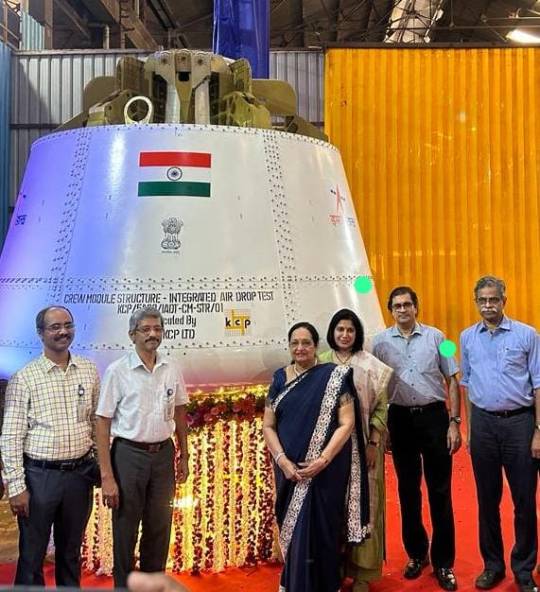
View On WordPress
#Aerospace#Air Force#Chandrayaan#Crew Model#Dr V. L. Indira Dutt#Gaganyaan#GSLV#Heavy Engineering#HSFC#Human Space Flight Centre#Hutton R.#IAF#India#Indian Air Force#Indian Space Research Organisation#Indira Dutt#Industry#Integrated Air Drop Test#ISRO#KCP Limited#R. Hutton#Space#Space Sector#Space Technology
1 note
·
View note
Link
Chandrayaan-3 has successfully initiated its ascent from Sriharikota, thereby advancing India's space exploration endeavors to unprecedented levels. The GSLV Mark 3 (LVM 3) heavy-lift launch vehicle has taken off seamlessly from the Satish Dhawan Space Centre in Andhra Pradesh's Sriharikota, by the predetermined launch schedule.
#chandrayaan#chandrayaan3#chandrayaanlaunch#chandrayaanlanding#chandrayaanmission#chandrayaan isro#isro#isro india#indian#indian space research organisation#indian space#isro lunar mission#isro space#isro space mission#newsprovider#newsprovidernetwork#thegyaaneeknowledge#india#science#technology
1 note
·
View note
Link
Today, on Sep 2nd of 2023, the Indian Space Research Organisation (ISRO) launched India’s first space-based solar observatory, PSLV-C57/Aditya-L1 Mission at 11.50 hrs from Sriharikota Space Centre.
#technology#breaking news#news#isromissions#isroindia#isro#aditya-l1#sriharikota#space centre#indian space research organisation#solar mission#india#indian#achievement#space news
0 notes
Text
இந்திய விண்வெளி ஆராய்ச்சி மையத்தில் பணியிடங்கள் வெளியாகியுள்ளன..!
இந்திய விண்வெளி ஆராய்ச்சி மையத்தில் பணியிடங்கள் வெளியாகியுள்ளன..!
#govtjobs #upsc #ssc #currentaffairs #gk #ssccgl #ias #jobs #governmentjobs
இந்திய விண்வெளி ஆராய்ச்சி நிறுவனத்தின் பின் வரும் பணிகள் நிரப்புவதற்கான அறிவிப்பு வெளியாகியுள்ளன. மத்திய அரசு இந்த அதிகாரப்பூர்வ அறிவிப்பினை வெளியிட்டுள்ளது. இந்திய விண்வெளி ஆராய்ச்சி நிறுவனத்தின் பணிக்கு விண்ணப்பிக்க ஆர்வமுள்ளவர்கள் 29/11/2022 முதல் 19/12/2022க்குல் என்ற இனையத்தில் மூலமாக ஆன்லைன் மூலமாக விண்ணப்பிக்கவும். இப்பணிக்கு விண்ணப்பிக்கும் நபர்கள் விண்ணப்பிக்கும் முன்பு கீழ்க்கண்ட…
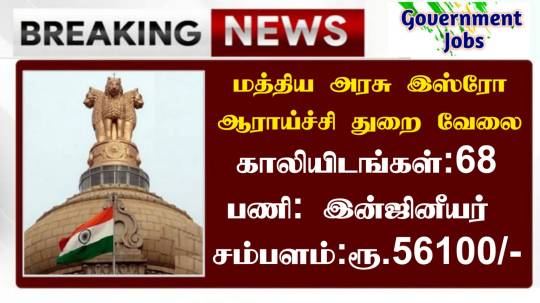
View On WordPress
#amazing facts about indian space research organisation#india space research organisation#india space research organization#indian space agency#indian space research#indian space research organisation#indian space research organisation (isro)#indian space research organisation news#indian space research organisation news today#indian space research organization#ISRO ICRB Recruitment 2022 Apply 68 Scientist Posts
0 notes
Text
congratulations to all the isro scientists that worked to make chandrayaan 3 possible!
39 notes
·
View notes
Text

Chandrayaan-3: India makes historic landing near Moon's south pole
With this, India joins an elite club of countries to achieve a soft landing on the Moon, after the US, the former Soviet Union, and China.
The Vikram lander from Chandrayaan-3 successfully touched down as planned at 18:04 local time (12:34 GMT).
Celebrations have broken out across the country, with Prime Minister Narendra Modi saying "India is now on the Moon".
"We have reached where no other country could. It's a joyous occasion," he added. Mr Modi was watching the event live from South Africa where he is attending the BRICS summit.
0 notes
Text
See 1st photos of the moon's south pole by India's Chandrayaan-3 lunar lander
By Tereza Pultarova
23 August 2023
India's Chandrayan-3 mission has nailed its lunar landing.

The first images from India's Chandrayaan-3 mission taken after the probe's historic moon touchdown reveal a pockmarked surface near the lunar south pole.
The Indian Space Research Organisation (ISRO) shared the images on X, formerly Twitter, on Wednesday (August 23), about four hours after the Chandrayaan-3 spacecraft completed its smooth descent.
The first set of four images were taken by the lander's Horizontal Velocity Camera as it was nearing the surface of the moon.
An additional image from the Landing Imager Camera, shared a little later, shows a glimpse of the landing site, including a portion of the spacecraft's landing leg and its shadow.
"The communication link is established between the Ch-3 Lander and MOX-ISTRAC, Bengaluru," ISRO said in a post on X.
"Chandrayaan-3 chose a relatively flat region on the lunar surface," the agency added in the subsequent post.
The landing made India only the fourth country in history to successfully put a spacecraft on the surface of the moon, after the United States, the former Soviet Union and China.
Chandrayaan-3 is also the first spacecraft in history to touch down near the lunar south pole, an area that is currently attracting the attention of scientists and space agencies from all over the world.
Scientists think that the permanently shadowed polar craters contain water ice trapped in the rocks, which could be extracted and used to support a permanent human presence on Earth's natural companion.
Moreover, these lunar craters could be used to build next-generation telescopes that would allow astronomers to see farther than they can today.
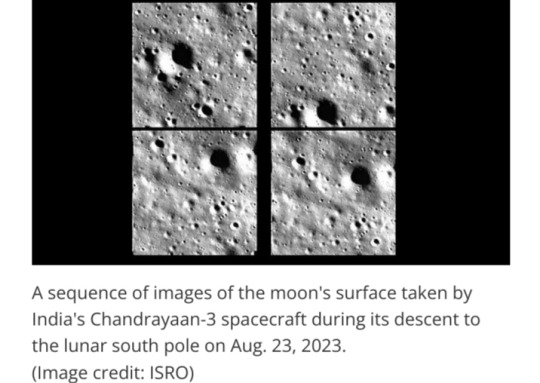
A small rover called Pragyan arrived on board Chandrayaan-3 and will soon deploy and commence its exploration of the exciting region, so many more fascinating images are likely to come soon.
Both the rover and the lander, however, are unlikely to remain operational for more than two weeks, as ISRO doesn't expect the vehicles' batteries to make it through the two-week lunar night.
Chandrayaan-3 was India's second try at landing near the moon's south pole.
The country's first attempt at a lunar touchdown, in September 2019, failed when the Chandrayaan-2 lander crashed into the moon due to a software glitch.
India's triumph comes only three days after Russia lost its Luna-25 mission, its first attempt to put a spacecraft on the moon's surface in 47 years.
Luna-25, too, was aiming for the lunar south pole but crashed into the moon instead after a botched orbital maneuver on Saturday (August 19).
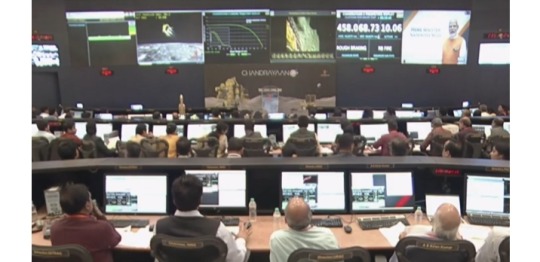


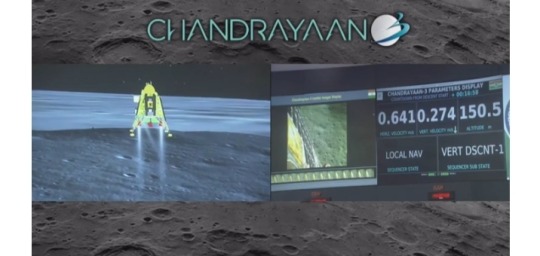

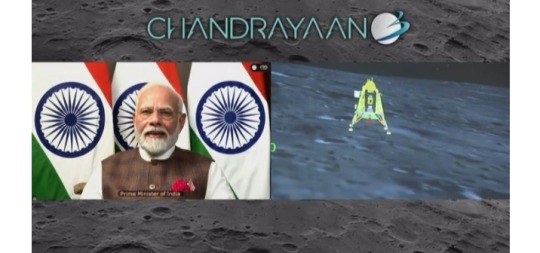
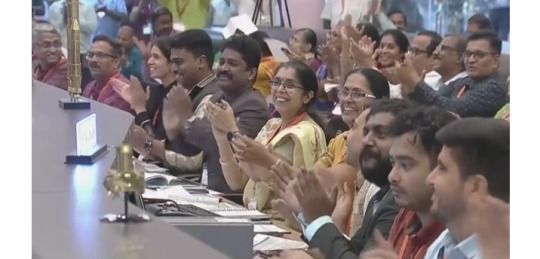
#Chandrayaan-3#Chandrayaan-3 lunar lander#Indian Space Research Organisation (ISRO)#Chandrayaan-3 spacecraft#Horizontal Velocity Camera#Landing Imager Camera#next-generation telescopes#Pragyan#India#moon#lunar landing#spacecraft#moon landing
2 notes
·
View notes